#Kiowa Indian Nation
Explore tagged Tumblr posts
Photo

Kiowa life in early to mid 20th century southwest Oklahoma, told/revealed/explained by Henrietta Tongkeamha and her son, Raymond Tongkeamha - - pictured above.
(via 9781496228116.jpg (1650×2550))
#Benjamin R. Kracht#Henrietta Tongkeamha#Raymond Tongkeamha#Kiowa Indian Nation#Anthropology#Indigenous America
51 notes
·
View notes
Text
The Apache are a group of culturally related Native American tribes in the Southwestern United States, which include the Chiricahua, Jicarilla, Lipan, Mescalero, Mimbreño, Ndendahe (Bedonkohe or Mogollon and Nednhi or Carrizaleño and Janero), Salinero, Plains (Kataka or Semat or "Kiowa-Apache") and Western Apache (Aravaipa, Pinaleño, Coyotero, Tonto). Distant cousins of the Apache are the Navajo, with whom they share the Southern Athabaskan languages. There are Apache communities in Oklahoma and Texas, and reservations in Arizona and New Mexico. Apache people have moved throughout the United States and elsewhere, including urban centers. The Apache Nations are politically autonomous, speak several different languages, and have distinct cultures. Historically, the Apache homelands have consisted of high mountains, sheltered and watered valleys, deep canyons, deserts, and the southern Great Plains, including areas in what is now Eastern Arizona, Northern Mexico (Sonora and Chihuahua) and New Mexico, West Texas, and Southern Colorado. These areas are collectively known as Apacheria. The Apache tribes fought the invading Spanish and Mexican peoples for centuries. The first Apache raids on Sonora appear to have taken place during the late 17th century. In 19th-century confrontations during the American-Indian wars, the U.S. Army found the Apache to be fierce warriors and skillful strategists.

91 notes
·
View notes
Text

Black Diamond was born in 1893 of a bull and cow given to the zoo by Barnum and Bailey (most reports claim his age to be 20 at the time of his demise)
The popular Indian Head, or Buffalo, five-cent coin (nickel) was introduced on February 22, 1913
Although aficionados prefer the name Buffalo Nickel, the official name of the coin is the Five Cent Indian Head.
1913. Designed by James Earle Fraser, a student of legendary sculptor Augustus Saint-Gaudens, the Indian Head/Buffalo nickel design showcases the native beauty of the American West ...
The obverse of the 1937 Buffalo or Indian Head nickel features an oversized bust of a Native American warrior. Unlike the later Sacagawea dollars, this design was not based on a single model or historical figure. Instead, sculptor James Earle Fraser created a composite image of three well-known men: Chief Iron Tail of the Sioux, Big Tree of the Kiowa, and Two Moons of the Cheyenne. This composite man wears two feathers woven into his hair and a braid running down the side of his head. On the 1937-D “3 Legged” type, there is significant die rust on the nape of the bust’s neck. The date (1937) is superimposed over the truncation of the bust, and the legend LIBERTY is off to the side at 2 o’clock on the rim.
Reverse :
The reverse was, however, based on a real buffalo named Black Diamond. This buffalo lived at the New York Central Park Zoological Garden. While standard types display all four legs, on this type the foreleg of the buffalo is missing. Additionally, the rear right leg is slightly weak. There can also be an arcing line of raised metal due to die rust in between the animal’s fore and rear legs ...
This gives rise to the coin’s unofficial name: “Urinating Buffalo”. The buffalo is standing on a small strip of land, below which is the denomination (FIVE CENTS) and mint mark (D). Arcing above the animal’s back around the rim is the legend UNITED STATES OF AMERICA. The motto E PLURIBUS UNUM is squeezed between “AMERICA” and the animal’s back.
Intriguingly, this design does not include the national motto IN GOD WE TRUST. Mint Director George Roberts informed Fraser that “the motto, ‘In God We Trust’, is not required upon this coin” (Burdette, 2007).
Edge: The edge of the 1937-D “3 Legged” Indian Head (Buffalo) nickel is plain or smooth, without lettering or inscriptions ...
9 notes
·
View notes
Note
Yo Aqui, you'll really get a kick out of this. You remember that one "Pat Allee was an expert on Native Americans and based the Wolf Pack on Eastern Native American tribes" tweet? Because, oh man, I fell down a rabbit hole of research after reading the follow-up tweets claiming that Ben Hurst and Pat Allee rewrote a "critically acclaimed" play based on Cherokee history, which the tweet claimed was called "Until These Hills." Just to get everyone up to speed, the tweet thread says: --- Did you know that Lupe and the Wolfpack were created by Pat Allee and patterned after Eastern Native American tribes? Pat Allee was an expert on Native Americans, and she decided to pattern the wolf pack after Eastern American tribes. The 2 had intended to develop Lupe and the Wolfpack further in the 3rd season, but it sadly never came to pass.
This wouldn't be Pat and Ben's last time working on such a project. They ended up being the lead writers, conceptual designers, and would provide voice overs for the Museum of the Cherokee Indian in Cherokee, North Carolina. They would also write a new script for the 2007 performance of "Until These Hills," a critically acclaimed play going over the history of the Cherokee of the Eastern region up until they were forcibly removed by US forces in 1838 via the Trail of Tears. Find out more about the works and lives of Ben Hurst and Pat Allee, along with the many works and people which influenced SatAM, in the upcoming book! --- Firstly, hilariously enough, wrong name; the play is called "Unto These Hills," which is easily found via Google search. While looking for sources describing the extent of Hurst and Allee's contribution, I found a thesis paper detailing the history of the play. Despite the tweet suggesting otherwise, the play was not "critically acclaimed" due to Hurst and Allee. Instead, credit goes to Kiowa playwright Hanay Geiogamah, and later Linda West, who is not Cherokee herself but who works directly with the Cherokee Nation. In fact, Hurst and Allee's version seemed to have bombed with critics. Unto These Hills has a long and storied history. It premiered in 1950 as a white pastiche of Cherokee history and culture, where white people would literally dress up in redface and act stereotypically Indian. Nonetheless, the Cherokee were interested in reappropriating the play to reflect their stories more accurately, while also appealing to the general public as a piece of performance art that generates revenue for the nation. In 2006, the Cherokee Historical Association hired Kiowa playwright Hanay Geiogamah to rewrite the original script written by white playwright Kermit Hunter, whose version was characterized as "schoolbook history," and whitewashed. Critics lauded Geiogamah's script for being literate and for reintroducing Native sensibilities, but general audiences found it difficult to relate to and follow. Due to this, as well as somewhat exaggerated issues with tardiness and plagiarism concerns (as in, he... somehow plagiarized his own work), the CHA wound up dropping his version. And in spite of their apparent goals of reappropriating the play for Cherokee sensibilities, they hired Ben Hurst and Pat Allee to punch up the script for the 2007 production. The pair basically got introduced as "Hollywood writers," despite the paper noting that neither Hurst nor Allee had had any writing credits to their names since 1999. Furthermore, the guy who vouched for them, John Tissue, claimed the two had had ten years' experience of writing Cherokee history, but conveniently neglected specifics.
Choice quotes include:
"The CHA replaced Geiogamah the following year with Pat Allee and Ben Hurst, who made their living writing cartoons." "Choosing Allee and Hurst to write the new script showed that the CHA sacrificed its desire for a fully Cherokee story, to use 'veteran Hollywood writers.'" "Their credits, however, consisted of mainly children's cartoons such as 'Tiny Toon Adventures' and two separate 'Sonic the Hedgehog' series. Neither one had any writing credits to their name since 1999." "Tissue, defending his choice, wrote [...] that 'Ben and Pat did write cartoons among many other things including the TV show Taxi but they also have [ten] years experience writing about Cherokee history. I needed that mix.' Tissue did not divulge the details of their work on the Cherokee [...] or strangely enough to newspapers." "Their background in cartoons showed in the very childlike script that played for laughs. The play is more a series of vignettes than a cohesive story with a unified thread running throughout." "Whereas [the original white playwright] Hunter denied the Indians any sense of humor, Allee and Hurst made the Indians cartoonish, filling the script with bad jokes in English." "Instead of using the Kanati and Selu [Cherokee sacred figures] as narrators, Allee and Hurst used a grandmother and grandfather telling bedtime stories to their grandsom and granddaughter, an idea more accessible to white audiences." "Allee and Hurst also added the Cherokee Sequoyah to the script. Though they do address his achievement of creating the Cherokee Syllabary, they also play the situation for laughs. In Sequoyah's first scene, Cherokee warriors mock him for his 'talking leaves': "Junaluska: And how go your efforts? Sequoyah: My writing system? (sighs) It is proving to be most difficult. Junaluska: Well, my friend, I have no doubt you will succeed with the talking leaves. Warrior #3: (laughs) Talking leaves? (picks up a leaf) Hello? (to Sequoyah) There must be something wrong with this one. It doesn't answer. (Warrior #3 shakes the leaf) Hello? Warriors: (laugh)" "After soldiers remove a family from their house, white men come in, bag Indian belongings and take over the property. The main focus of removal here, however, does not occur in Cherokee, but in Nashville, Tennessee. White citizens line the streets to watch the Indians pass through their town. Upset by the occurrences, they bring out blankets, food, and clothing, and some begin crying. Kamama, a small Indian child, mentions this to her grandmother, who responds 'never forget Kamama, there are always good people, no matter what color they are.' Throughout this scene, Cherokees sing the hymn Amazing Grace, and 'after a few stanzas, all the whites join in. The orchestrated score swells, filling the house, and the song is sung in full harmony to a huge dramatic finish. This picture of harmony between the races took the focus off of the impact removal had on the Cherokee people, and showed how the playwrights imagined whites and Indians interacted." "The Association believed that audiences would overwhelmingly enjoy the play."
"Very few newspaper articles or other sources exist detailing the success of the 2007 season, but the few that do discuss the show do not paint a positive picture. The reviewer that felt Geiogamah's piece literate felt that with the return of the traditional stories from the Hunter script present in Allee and Hurst's version brought with it 'the trite storytelling, static staging, and grade-school history lessons' of the original show." "In summation, he called the drama dull, and ended his review saying 'personally... I would rather have watched 'Sonic the Hedgehog.'"
Gee, it's almost like Ben Hurst and Pat Allee got off by being known by people. And I'm also not surprised that someone thinks they can edit history with those two.
9 notes
·
View notes
Text
This Veterans Day, we honor all those who have served our country. Thank you for making the ultimate sacrifice. 🇺🇸
Photo: Side gunner Gus Palmer (Kiowa) and aerial photographer Horace Poolaw (Kiowa) in front of a B-17 Flying Fortress at MacDill Field, Tampa, Florida, ca. 1944. Courtesy Smithsonian’s National Museum of the American Indian

5 notes
·
View notes
Note
Hello, how are you? Can I please request suggestions for a 25-30 years old fc with a "gothic rock" vibe? Thank you very much!
Úrsula Corberó (1989) - Money Heist.
Rob Raco (1989) - Riverdale.
Hannah John-Kamen (1989) Nigerian / Norwegian - Killjoys.
Kiowa Gordon (1990) Hualapai, English, Scottish, Danish, Manx - Blood Quantum.
Sarah Kameela Impey (1991) Indo Guyanese / British - We Are Lady Parts.
Jordan Connor (1991) Chinese, Vietnamese, Thai, Indonesian, Papua New Guinean, Samoan / White - Riverdale.
Kiana Madeira (1992) Irish, Unspecified First Nations, Black Canadian / Portuguese - Fear Street.
Avan Jogia (1992) Gujarati Indian / English, Welsh, some German, Irish, French - Now Apocalypse.
Jesse James Keitel (1993) - is trans - Star Trek.
Lyrica Okano (1994) Japanese - The Runaways.
Yves Mathieu East (1994) Afro Asian - is queer.
Natasha Liu Bordizzo (1994) Chinese / Italian - Ahsoka.
Lily Sullivan (1994) - Evil Dead Rise.
Adeline Rudolph (1995) Korean / German - Chilling Adventures of Sabrina, Resident Evil.
Sophia Ali (1996) Pakistani / Sicilian Italian, Danish, Norwegian, German - Uncharted.
Leah Lewis (1996) Chinese - Nancy Drew.
Tati Gabrielle (1996) African-American, ¼ Korean - Uncharted, You.
There aren't many actors with that kind of vibe (or that I know of?!) but here you go!
6 notes
·
View notes
Text


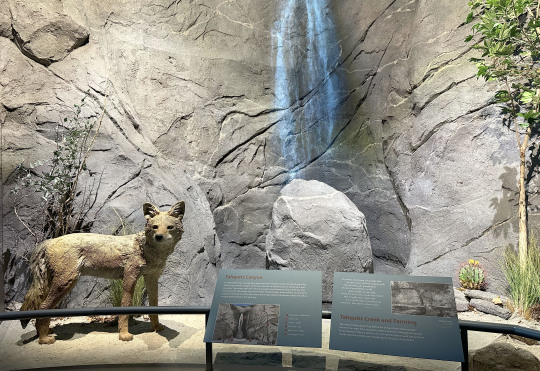

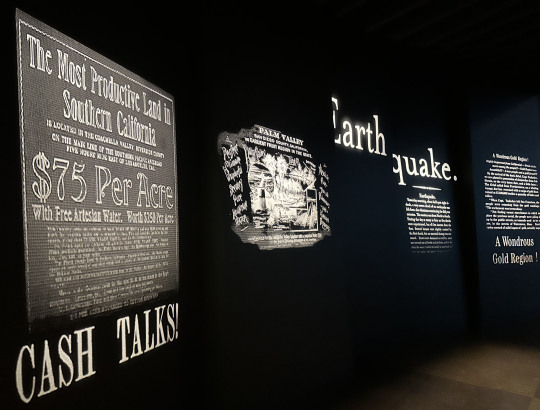
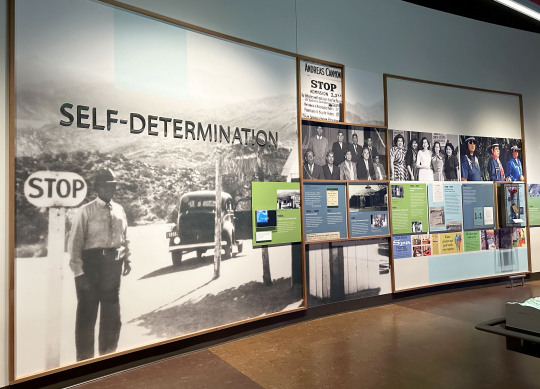

The Agua Caliente Cultural Museum opened in 2023 in a new location in Palm Springs as part of the Agua Caliente Cultural Plaza. It consists of several exhibition areas that tell the story of the Agua Caliente Band of Cahuilla Indians. These include an immersive digitally animated film in a theater at the entrance, scale replicas of the Indian Canyons, and videos, historical photographs and documents. The museum also includes several artifacts including those found during excavations for the plaza that are over 7,000 years old.
The museum also has a gallery for rotating exhibitions focused on traditional and contemporary Native American art. Currently on view is For a Love of His People, the black and white photography of Horace Poolaw.
From the museum–
Horace Poolaw (Kiowa, 1906-1984) was born during a time of great change for his people—one year before Oklahoma statehood and six years after the U.S. government approved an allotment policy that ended the reservation period. A rare American Indian photographer who documented Indian subjects, he began making a visual history in the mid-1920s and continued for the next 50 years.
Poolaw photographed his friends and family, and events important to them—weddings, funerals, parades, fishing, driving cars, going on dates, going to war, playing baseball. When he sold his photos at fairs and community events, he often stamped the reverse: “A Poolaw Photo, Pictures by an Indian, Horace M. Poolaw, Anadarko, Okla.” Not simply by “an Indian,” but by a Kiowa man strongly rooted in his multi-tribal community, Poolaw’s work celebrates his subjects’ place in American life and preserves an insider’s perspective on a world few outsiders are familiar with—the Native America of the Southern Plains during the mid-20th century.
Organized around the central theme of Poolaw as a man of his community and time, For a Love of His People is based on the Poolaw Photography Project, a research initiative established by Poolaw’s daughter, Linda, in 1989 at Stanford University and carried on by Native scholars Nancy Marie Mithlo (Chiricahua Apache) and Tom Jones (Ho-Chunk) of the University of Wisconsin-Madison.
For a Love of His People: The Photography of Horace Poolaw is organized by the Smithsonian National Museum of the American Indian. The exhibition was curated by Tom Jones (Ho-chunk) and Nancy Marie Mithlo (Chiricahua Apache).
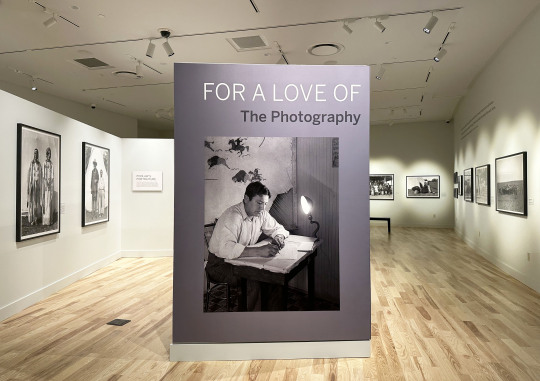

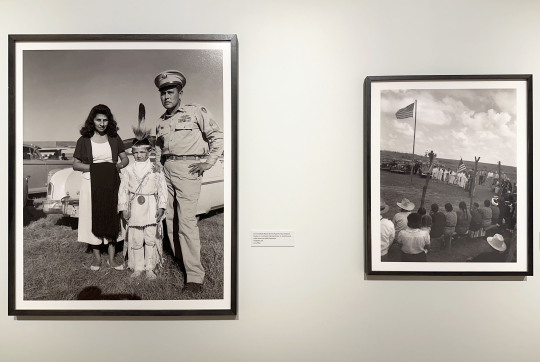
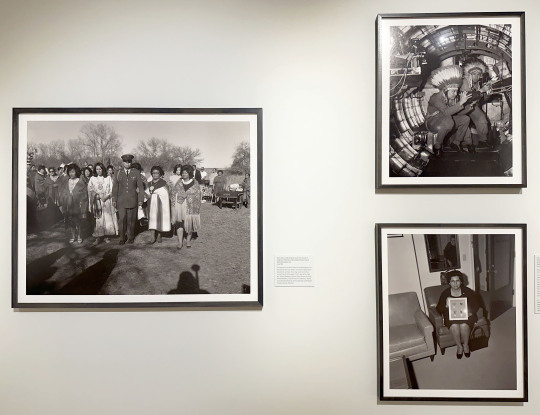


#Agua Caliente Cultural Museum#Horace Poolaw#Agua Caliente Cultural Plaza#Agua Caliente#Agua Caliente Band of Cahuilla Indians#Artifacts#Black and White Photography#Cahuilla Indians#Palm Springs Museum#California Museum#Coachella Valley#Indigenous Peoples Day#Tom Jones#Museum#Nancy Marie Mithlo#Native American Art#Native American Artists#Native American History#Photography#Places to Visit#Smithsonian National Museum of the American Indian
0 notes
Text

The Cheyenne are an Indigenous people of the Great Plains. Their Cheyenne language belongs to the Algonquian language family. Today, the Cheyenne people are split into two federally recognized nations: the Southern Cheyenne, who are enrolled in the Cheyenne and Arapaho Tribes in Oklahoma, and the Northern Cheyenne, who are enrolled in the Northern Cheyenne Tribe of the Northern Cheyenne Indian Reservation in Montana. The Cheyenne comprise two Native American tribes, the Só'taeo'o or Só'taétaneo'o (more commonly spelled as Suhtai or Sutaio) and the Tsétsêhéstâhese (also spelled Tsitsistas, [t͡sɪt͡shɪstʰɑs]). The tribes merged in the early 19th century.
At the time of their first European contact, the Cheyenne lived in what is now Minnesota. They were close allies of the Arapaho and loosely aligned with the Lakota. By the early 18th century, they were forced west by other tribes across the Missouri River and into North and South Dakota, where they adopted the horse culture. Having settled the Black Hills of South Dakota and the Powder River Country of present-day Montana and Wyoming, they introduced the horse culture to Lakota people about 1730. With the Arapaho, the Cheyenne pushed the Kiowa to the Southern Plains. In turn, they were pushed west by the more numerous Lakota
The main group of Cheyenne, the Tsêhéstáno, was once composed of ten bands that spread across the Great Plains from southern Colorado to the Black Hills in South Dakota. They fought their historic enemies, the Crow and later (1856–79) the United States Army. In the mid-19th century, the bands began to split, with some bands choosing to remain near the Black Hills, while others chose to remain near the Platte Rivers of central Colorado.
The Northern Cheyenne, known in Cheyenne either as Notameohmésêhese, meaning "Northern Eaters" or simply as Ohmésêhese meaning "Eaters", live in southeastern Montana on the Northern Cheyenne Indian Reservation. Tribal enrollment figures, as of late 2014, indicate that there are approximately 10,840 members, of which about 4,939 reside on the reservation. Approximately 91% of the population are Native Americans (full or part race), with 72.8% identifying themselves as Cheyenne. Slightly more than one quarter of the population five years or older spoke a language other than English. The Southern Cheyenne, known in Cheyenne as Heévâhetaneo'o meaning "Roped People", together with the Southern Arapaho, form the Cheyenne and Arapaho Tribes, in western Oklahoma. Their combined population is 12,130, as of 2008. In 2003, approximately 8,000 of these identified themselves as Cheyenne, although with continuing intermarriage it has become increasingly difficult to separate the tribes.
1 note
·
View note
Text
UNC-Chapel Hill's Kunstmuseum stellt Native American Kunst in den Mittelpunkt einer neuen Ausstellung
Bild: "Indian Gathering," ein Ölgemälde des Kiowa-Künstlers Stephen Mopope aus dem Jahr 1933 ist Teil der Wanderausstellung des Gilcrease Museums, die indianische Kunst zeigt. Am 16. Februar wurde im Ackland Art Museum der UNC-Chapel Hill eine neue Ausstellung zur Kunst der Native Americans eröffnet. Die Wanderausstellung mit etwa 75 Werken trägt den Titel Past Forward: Native American Art aus dem Gilcrease Museum. Das Gilcrease Museum in Tulsa, Oklahoma, besitzt eine Sammlung, die größtenteils von dem verstorbenen Thomas Gilcrease, einem Mitglied der Muscogee Nation, aufgebaut wurde. Das Ackland ist der erste von drei Ausstellungsorten in den USA, an dem die Wanderausstellung gezeigt wird. Ein Ölgemälde auf Leinwand zeigt eine Menschenmenge, die sich in einer Reihe aufstellt. Viele tragen grüne Kopfbedeckungen. Die Landschaft besteht aus Bergen im Hintergrund und lehmähnlichen Gebäuden. Mit freundlicher Genehmigung des Ackland Art Museum / Gilcrease Museum 1940 malte der Hopi-Künstler Fred Kabotie "Pueblo Green Corn Dance". Laut Peter Nisbet, dem stellvertretenden Direktor des Ackland Art Museums für kuratorische Angelegenheiten, umfasst die Ausstellung alte und zeitgenössische Kunstwerke von verschiedenen Stämmen, wie den Kiowa und Cherokee. Einige europäisch-amerikanische Kunstwerke sind ebenfalls Teil der Ausstellung, so Nisbet, um einen Dialog über den kulturellen Austausch zu fördern. Die Sammlung ist nicht nach Künstlern oder Zeitabschnitten geordnet, sondern nach vier Konzepten: Zeremonie, Souveränität, visuelle Abstraktion und Identität. "Es gibt viele Einstiegspunkte in diese Ausstellung, und das ist, glaube ich, eine ihrer Stärken", so Nisbet. "Es gibt diese Themen, über die wir sprechen. Es gibt die einzelnen Objekte selbst, die atemberaubend schön sein können. Das Ackland denkt auch über seine eigene Auseinandersetzung mit der Kunst der amerikanischen Ureinwohner nach. Es ist eine reichhaltige Ausstellung. In der Ausstellung sind Stücke zu sehen, die Tausende von Jahren alt sind, wie ein schmetterlingsförmiger Bannerstein, der auf mindestens 1000 v. Chr. zurückgeht. Etwa ein Viertel der Ausstellung besteht aus Werken, die in den letzten 50 Jahren entstanden sind, so Nisbet. "Moderne indianische Künstler unserer Zeit haben bewusst auf frühere Traditionen zurückgeblickt, um sie wiederzubeleben, um so ein kontinuierliches Gespräch mit der Vergangenheit zu führen", so Nisbet. "Der Titel der Ausstellung soll darauf anspielen." Ein Tempera-auf-Papier-Kunstwerk, das acht Menschen zeigt, die in einer Reihe stehen - vier im Vordergrund, vier im Hintergrund. Sie tragen kunstvolle Masken und farbenfrohe Kleidung (Gilcrease Museum) Waldo Mootzka, Hopi, 1903 - 1938, Bohnentanz, frühes 20. Jahrhundert, Tempera auf Papier. Gilcrease Museum, Tulsa, OK. Mit der Ausstellung im Ackland will das Museum unter anderem die Bekanntheit von Künstlern des Mittleren Westens erhöhen, die an der Ostküste weniger bekannt sind. "Die Ausstellung selbst soll zeigen, dass die Kunst der amerikanischen Ureinwohner nicht nur eine Facette der amerikanischen Kunst ist", so Nisbet. "Sie ist in gewisser Weise eine eigene Tradition. Sie hat ihre eigenen Stärken, ist aber auch ein wesentlicher Teil der breiteren Geschichte". Nisbet hofft, dass die Werke durch die Auseinandersetzung mit den Themen der Ausstellung beim Publikum an der Universität und im ganzen Bundesstaat Anklang finden, vor allem wenn man bedenkt, dass North Carolina die größte indianische Bevölkerung östlich des Mississippi hat. Hier leben die Occaneechi Band of the Saponi Nation, die Coharie, die Eastern Band of Cherokee Indians, die Haliwa-Saponi, der Lumbee Tribe of North Carolina, die Meherrin, die Sappony, die Waccamaw Siouan und die Tuscarora. Zusätzlich zur Wanderausstellung wird das Ackland seine eigene Sammlung indianischer Kunst zeigen und interaktive Programme wie Führungen und wissenschaftliche Vorträge anbieten. Originalartikel Das könnte Sie auch interessieren Read the full article
0 notes
Text
they were hired to rewrite the script of a play, Unto These Hills, which in the previous year had already been rewritten by a Kiowa Indian playwright. the original version of the play was a white man's pastiche of Cherokee history and culture, which involved the historical removal of the Cherokee. but for the removal scene, Hurst and Allee based the setting in Nashville, Tennessee. and LIKE.
they fucking had sad white people lining the streets, watching the Indians get evicted, offering them food and clothing and crying but nobody lifting a finger to stop the soldiers that evicted them. on top of that, they had this ultra-glurgy scene where the Cherokees start singing "Amazing Grace" of all things, and the white crowd joins in. oh, and in case you didn't get the message, a small Indian girl's grandmother goes "remember sweetie, there are good people in this world no matter the race uwu"
oh the whiteness. holy shit dude. even more hilarious is the fact that the guy who vouched for them, saying they had "ten years'" worth of experience writing about Cherokee history, conveniently omitted specifics. furthermore, they were described as "veteran Hollywood writers" despite having had no writing credits to either of their names since 1999. "they filled the script with bad jokes in English" is a quote I had to read with my own two eyeballs. oh but Pat Allee was such an expert on Native Americans, lmaooooo Cherokee Nation I am so sorry
funny you guys should bring up SatAM because I just recently learned some lulzy stuff about Ben Hurst and Pat Allee
and my reaction to it was basically

it's the cringiest most hilarious "dude trust me my uncle who works at Nintendo said so" shit ever omfg
6 notes
·
View notes
Photo

Kiowa George Poolaw. También conocido como Pohd-Lohk, Old Wolf (Viejo Lobo). Kiowa. Fotografía tomada alrededor de 1928. Cortesía del Museo Nacional del Indio Americano.
#kiowa#kiowa nation#kiowa tribe#american indian#natives#native#native american#nativos#nativos americanos
68 notes
·
View notes
Photo

This Stacked Star Tear dress was made by Cherokee artist, Tonia Hogner-Weavel. It won the Judges Choice Award at the 9th Annual Cherokee Homecoming Art Show in 2004.
The Cherokee Tear dress was adopted in 1975 as the official tribal dress for the Cherokee Nation of Oklahoma. Many believe that the tear dress originated with the ‘Trail of Tears’ death march of Eastern Cherokees to Indian Territory, what is now Oklahoma, in 1838-1839. This actually is not true. The dress was created in what appeared to be an embarrassing situation for the Oklahoma Cherokees in 1968. Virginia Stroud was chosen to be "Miss Indian America" and was crowned wearing a Kiowa style dress. A group of Cherokee women approached W.W. Keeler, Chief at the time, to talk about creating a new dress that would represent the Cherokee Nation. After extensive research for a true representative style of the Cherokees, the tear dress was designed. The name refers to the actual tearing, not cutting, of cloth to make the dresses.
#Native American Heritage Month#Native American Art#Tonia Hogner-Weavel#Cherokee Art#Cherokee#Stacked Star Tear Dress#Cherokee dress
25 notes
·
View notes
Photo

Medal of Honor Monday: The "Warrior in Uniform"
On this day in 1967, a hero engages in an action that would earn him a nomination for the Medal of Honor. Pascal Poolaw never received that honor, but some view this situation as an oversight that still needs to be rectified.
What do you think? Should Congress intervene and authorize the Medal?
“In keeping with his heritage, he was a warrior,” one journalist wrote when Poolaw was inducted into the National Indian Hall of Fame. “A full blooded Kiowa Indian, he fought for his country in three wars, from the beaches of Normandy and the plains of Germany to the frozen hills and rice paddies of Korea to the jungles of Vietnam. He served his nation and died leading his men in battle.”
Poolaw nearly avoided his end in Vietnam. He’d retired in 1962, but then he entered the Army again for his sons. One of his older sons, Pascal Jr., had been badly wounded in Vietnam and lost his right leg below the knee. Now, Poolaw’s youngest was about to be sent into combat.
The story continues here: https://www.taraross.com/post/tdih-pascal-poolaw
4 notes
·
View notes
Text

I can't believe they didn't mention "Jamake Highwater"
[Image: a picture of a page from the book "Indian" Stereotypes in TV Science Fiction: First Nations' Voices Speak Out.
At the top of the photo, there is a transcript of dialogue, only the end of which is visible. It reads
Janeway:... Can one just chose their own animal guide?
Chakotay:... If you're interested, I'll be glad to teach you how to contact your animal guide.
Following this transcript is the analysis
""Pejata" means "medicine" in the Lakota language. It is also"a common substitute word for peyote among Native American Churck folks and, especially, in the Sioux medicine songs." This, coupled with using the medicine bundle to search for an animal spirit guide, sets up a contradictions with "Tattoo," the second-season episode that features Chakotay's tribal background. In "Tattoo," as noted in chapter 3, Chakotay's people are depicted as descendants of "(pre)Mayans" living in the Central American rain forest.
Another inconsistency shown in "The Cloud" deals with Chakotay's spirituality as portrayed within this one episode. He does say in the aforementioned dialogue that animal spirit guides become offended if one were to talk openly about them; however, he ignores proper treatment of medicine bundles. Of course, there are an amazing number of books on bookstore shelves that describe "Native American religions" and "Indian spirituality" in great detail. sprinkled with ethnographic and historic accounts to make them "authentic." The majority are written by Euro-Americans or Europeans and contain inaccurate and inappropriate information. Nevertheless, since the show's writers, Tom Szollosi and Michael Piller, present aspects of actual Indigenous religions, they could have attempted to respect First Nations peoples' religions in their depiction.
For example, Kiowa author N. Scott Momaday wrote a tasteful representation of a medicine bundle in his novel Ancient Child. Momaday alluded to the power and purpose of the medicine bundle as his character participated in traditional life, but he never actually described its contents or how it was used, for to write about these things would be improper in traditional First Nations societies."
End.]
42 notes
·
View notes
Text

Portrait of O-o-be, a Kiowa Native American, circa 1894 George W. Bretz National Museum of the American Indian
6 notes
·
View notes
Note
Hiya! Messaging to request some fc suggestions please? Needing help finding an fc for my character who will is very southern gothic, Ethel chain's Preacher's Daughter album, bones & all and southern blues inspired, I imagine her as dark haired and between ages of 25 to mid 30s - all ethnicities/races/genders come but if you don't mind me specifying , can I ask for only actors to be listed please? Aka no influences, singers or models etc - thank you so so much in advance!!!
Southern gothic, Ethel cain fc request here again sorry!! Forgot to add but if you don't mind me adding - also ideally someone who gives off messy/haphazard vibes please?? Kinda like they're obviously on the road a lot so have a permanent grease vibe?? So sorry if that's too specific and apologies again for adding this bug again tysm in advance!!!
Annabelle Wallis (1983) - Malignant.
Diane Guerrero (1986) Colombian - Doom Patrol.
Jodi Balfour (1987) - Quarry.
Courtney Bandeko (1988) Nigerian - Legacies.
Ritu Arya (1988) Indian - Lady Parts, Polite Society.
Nadia Hilker (1988) Tunisian / German - in The Walking Dead.
Nico Tortorella (1988) - is genderfluid, poly, pansexual and demisexual (any pronouns) - Fear The Walking Dead.
Rob Raco (1989) - Riverdale.
Hannah John-Kamen (1989) Nigerian / Norwegian - Resident Evil.
Michael Vlamis (1990) 37.5% Lebanese 25% Greek 25% Serbian 12.5% English - Roswell: New Mexico.
Emory Cohen (1990) - Lords of Chaos.
Kiowa Gordon (1990) Hualapai, English, Scottish, Danish, Manx - Blood Quantum.
Sarah Kameela Impey (1991) Indo-Guyanese / British - iWe Are Lady Parts.
Vico Ortiz (1991) Puerto Rican - non-binary (they/them) - Our Flag Means Death.
Joe Keery (1992) - Stanger Things.
Kiana Madeira (1992) Portuguese / Irish, Unspecified First Nations, Black Canadian - Fear Street.
Hari Nef (1992) Ashkenazi Jewish - is trans - Assassin Nation.
Katerina Tannenbaum (1993) - Betty,
Joseph Quinn (1993) - Stranger Things.
Taylor Russell (1994) Black Canadian / European - Bones and All.
Han Sohee (1994) Korean - My Name.
Lily Sullivan (1994) - Evil Dead Rise.
Sophia Ali (1995) Pakistani / Sicilian Italian, Danish, Norwegian, German - Uncharted, The Wilds.
Sasha Lane (1995) African-American, Māori, English, Scottish, Sorbian, French, Cornish, distant German, Italian, Belgian Flemish, Russian, and Northern Irish - is gay and has schizoaffective disorder - American Honey.
Adeline Rudolph (1995) Korean / German - Chilling Adventures of Sabrina.
Sarah Pidgeon (1996) - The Wilds.
Elliot Fletcher (1996) - is trans masc - Y: The Last Man.
Aria Shahghasemi (1996) Iranian - Legacies.
Archie Renaux (1997) English, Punjabi Indian.
Luka Sabbat (1997) Afro-Haitian, Irish, English, German.
Sydney Park (1997) African-American / Korean - There’s Someone Inside Your House.
Daisy Edgar-Jones (1998) - Where the Crawdads Sing.
Julia Dalavia (1998) Brazilian - Pantanal.
Felix Mallard (1998)
Hey anon! This ask was way harder than it should have been so I hope my followers give you more suggestions because I was struggling! Please keep in mind that some of these just give move around vibes.
4 notes
·
View notes